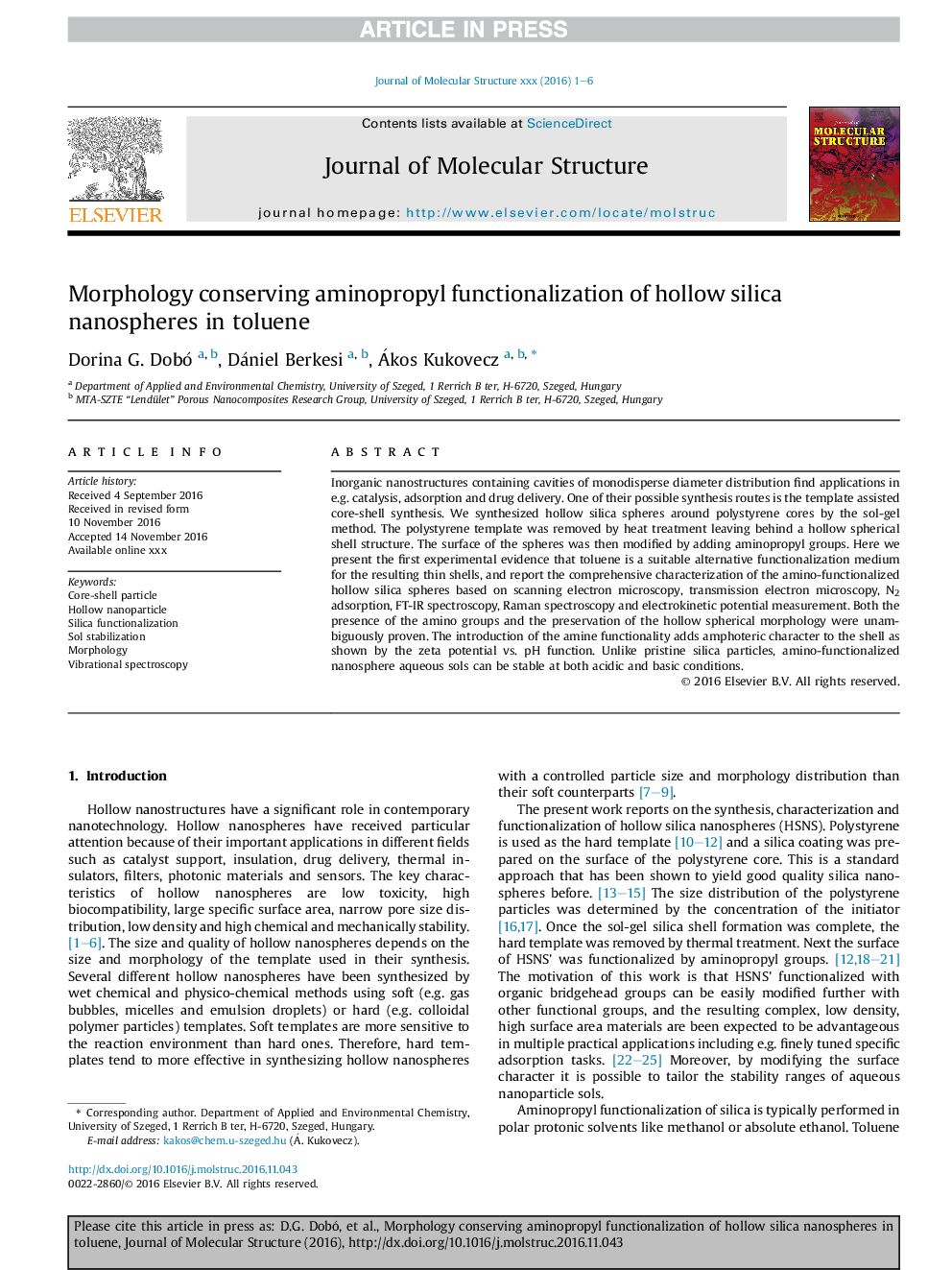| Article ID | Journal | Published Year | Pages | File Type |
|---|---|---|---|---|
| 5160341 | Journal of Molecular Structure | 2017 | 6 Pages |
Abstract
Inorganic nanostructures containing cavities of monodisperse diameter distribution find applications in e.g. catalysis, adsorption and drug delivery. One of their possible synthesis routes is the template assisted core-shell synthesis. We synthesized hollow silica spheres around polystyrene cores by the sol-gel method. The polystyrene template was removed by heat treatment leaving behind a hollow spherical shell structure. The surface of the spheres was then modified by adding aminopropyl groups. Here we present the first experimental evidence that toluene is a suitable alternative functionalization medium for the resulting thin shells, and report the comprehensive characterization of the amino-functionalized hollow silica spheres based on scanning electron microscopy, transmission electron microscopy, N2 adsorption, FT-IR spectroscopy, Raman spectroscopy and electrokinetic potential measurement. Both the presence of the amino groups and the preservation of the hollow spherical morphology were unambiguously proven. The introduction of the amine functionality adds amphoteric character to the shell as shown by the zeta potential vs. pH function. Unlike pristine silica particles, amino-functionalized nanosphere aqueous sols can be stable at both acidic and basic conditions.
Keywords
Related Topics
Physical Sciences and Engineering
Chemistry
Organic Chemistry
Authors
Dorina G. Dobó, Dániel Berkesi, Ákos Kukovecz,
